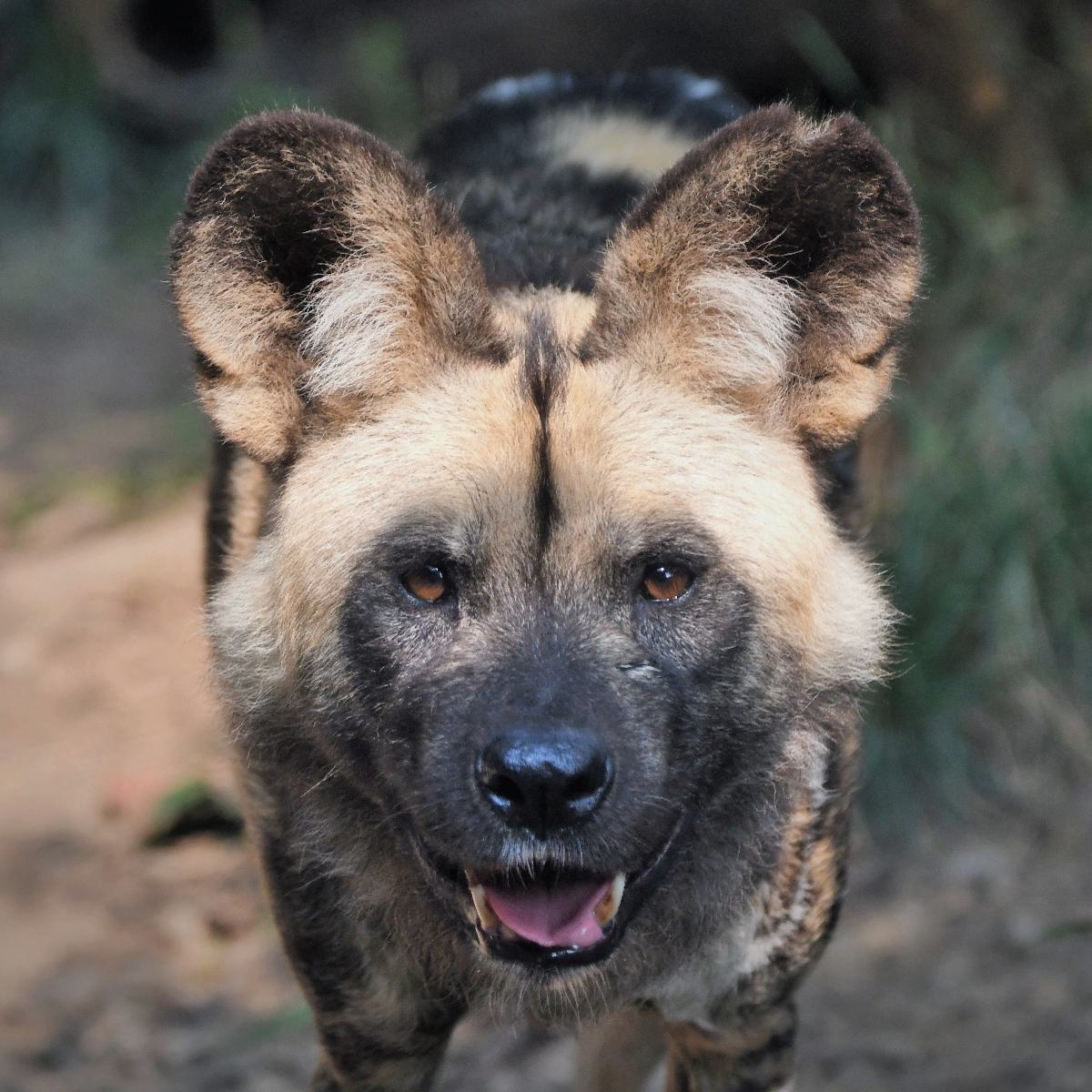
African Painted Dog
Lycaon pictus
Did you know?
- African painted dogs are part of the Canidae family, along with wolves and coyotes.
- They also are known as African wild dogs or Cape hunting dogs.
- They live in grasslands, plains and savannas in Africa, but can survive in a range of habitats.
- They are the largest African canid.
- They are the only canids to have four toes on their front paws instead of five.
Adaptations
African painted dogs have long slim legs and a slender frame, allowing them to have great speed and endurance. Their large, rounded ears give them exceptional hearing and help them control their temperature. Their coats of brown, black, white, red and yellow provide camouflage and make the pack of dogs appear larger to prey when they are hunting. The hair coloration varies and is unique to each individual, but the tip of the tail is always white, and the muzzle is always black.
The Pack Survives
African painted dogs live in a social family pack with usually five to 20 dogs. Painted dogs have a unique social structure – caring for their young, the aged and the injured – that sets them apart from every other predator in Africa. They also have high respect for territory lines and will not cross into another pack’s area. Unlike most social animals, the males stay with the pack while the females leave to join a new pack when they are about 3-years-old. Painted dogs in a pack hunt together, using vocalizations to communicate, and are some of the best hunters in Africa.
Threat Level
- Unknown
- Common
- Near Threatened
- Threatened
- Endangered
- Critically Endangered
- Extinct in the Wild
Endangered
The African Painted Dog is considered to be facing a very high risk of extinction in the wild.
Range
Southern Africa, South Africa, southern part of East Africa
Habitat
Open woodlands, grasslands

We care about African painted dogs
Once common in Africa, there are fewer than 3,000 painted dogs in the wild today, and 90% of their habitat is gone. This species struggles with habitat fragmentation, conflict with human activities and diseases, such as rabies and canine distemper.
Since 2015, the Saint Louis Zoo has participated in the Association of Zoos and Aquariums' Species Survival Program for painted dogs by supporting a pack at the Zoo. With this group, scientists at our Zoo have conducted behavior observation studies, an extensive echocardiogram study and a hormone assessment to further knowledge about this species to assist conservation efforts.
Find this animal in River's Edge

SAINT LOUIS ZOO ZONE
River's Edge
Take a journey along a mythical waterway through four continents to discover how wildlife, plants and people interact. River's Edge is the Saint Louis Zoo's first immersion exhibit—a lushly planted naturalistic environment showcasing multiple species from around the world.

